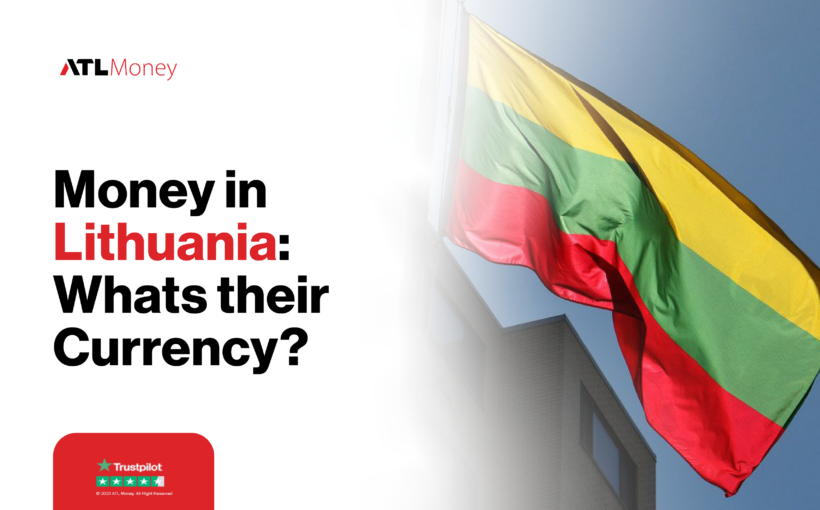If you’re planning to visit Lithuania or have financial dealings in the country, understanding its currency and money system is something that might interest you if you don’t already know about it.
Lithuania, a Baltic nation rich in history and culture, nestled in the northeastern part of Europe, has a fascinating economic journey. From Lithuania’s vibrant markets to its integration into the European financial system, its currency reflects the country’s economic and historical development.
In this article, we’ll explore the currency used in Lithuania, its historical background, and practical tips for those looking to send money to Lithuania.
Lithuania’s Currency: The Euro
Lithuania has undergone several currency changes, reflecting its complex history and economic transitions.
Since January 1, 2015, Lithuania has used the Euro (€) as its official currency. Before this, the Lithuanian Litas (LTL) was in circulation. The switch to the Euro marked a significant milestone in Lithuania’s economic integration with the European Union (EU).
– The Litas: Introduced in 1922, the Litas was Lithuania’s first modern currency after gaining independence from Russia. However, during the Soviet occupation, the Soviet Ruble replaced the Litas. After regaining independence in 1990, Lithuania reintroduced the Litas in 1993, which remained until the Euro adoption in 2015.
– Introduction of the Euro: Lithuania joined the Eurozone as part of its broader integration into the EU. The Euro replaced the Litas at a fixed exchange rate of 1 Euro = 3.45280 Litas. The adoption of the Euro aimed to stabilize the economy, facilitate trade, and simplify financial transactions within the EU.
– Economic Impact: The Euro has brought stability and growth to Lithuania’s economy. It has reduced currency exchange risks and fostered closer economic ties with other EU nations. Businesses and individuals now benefit from more straightforward cross-border transactions.
– Euro Banknotes and Coins: Like other Eurozone countries, Lithuania uses the standard Euro banknotes and coins. These notes come in denominations of 5, 10, 20, 50, 100, 200, and 500 Euros, while the coins range from 1 cent to 2 Euros.

Practical Tips for Handling Money in Lithuania
Understanding how to manage money in Lithuania can enhance your financial transactions and overall experience in the country.
- Sending Money to Lithuania: If you need to send money to Lithuania, consider using reliable transfer services that offer competitive exchange rates and low fees. Many international money transfer services facilitate quick and secure transactions to Lithuanian bank accounts.
- Banking and Payment Systems: Lithuania boasts a modern banking system with extensive ATM networks. Contactless payments and online banking are widely accepted, making them convenient for residents and visitors alike.
- Currency Exchange: When exchanging foreign currencies to Euros in Lithuania, compare rates at banks, currency exchange offices, and airports. Banks generally offer the best rates, but always check for any additional fees.
- Budgeting and Expenses: Lithuania is known for its affordable cost of living compared to Western Europe. From dining out to accommodation, you’ll find that your Euros go further. Budgeting appropriately can help manage expenses effectively.
- Travel and Shopping: Major cities like Vilnius and Kaunas offer numerous shopping and dining options. Credit and debit cards are widely accepted, but carrying some cash for smaller vendors and rural areas is advisable.
Why the Euro Matters for Lithuania?
The adoption of the Euro has been pivotal for Lithuania’s economic progress. It has facilitated smoother business operations and attracted foreign investments. For individuals and businesses dealing with Lithuanian transactions, the Euro provides a stable and internationally recognized currency, simplifying trade and travel.
The Euro also connects Lithuania more closely with other EU countries, enhancing its role in the regional economy. It reflects Lithuania’s commitment to economic stability and integration into the broader European market.
To conclude,
With the Euro serving as the national currency, navigating the financial system in Lithuania is simple. Understanding the use of the Euro and the useful facets of handling money in Lithuania will improve your experience, whether you’re arranging a trip, transferring money, or conducting business there.
For those looking to send money to Lithuania, using efficient and reliable transfer services ensures that transactions are secure and cost-effective.
Easily send money abroad with ATLMoney for secure and affordable transfers.
